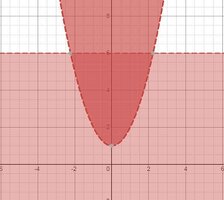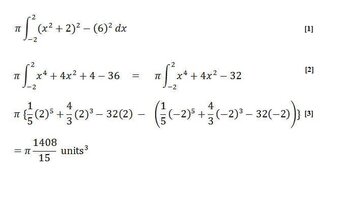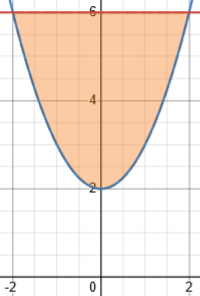Without commenting either way on whether you used the correct set-up for your first line, I wanted to make certain comments.
In your first line, supposedly the integrand does not need any more grouping symbols, but it looks more organized if it is written as
[(x2+2)2−(6)2]dx.
In your second line, you are missing "dx" in two places, and so I would have your integrands written as
(x4+4x2+4−36)dx and (x4+4x2−32)dx, respectively.
To ease your computation, because of the y-axis symmetry, the integral can be rewritten as
2π times the integral
from 0 to 2 of
(x4+4x2−32)dx.
Supposing your numerical answer is correct at the end, I would write the pi symbol after the fraction:
151,408π units3 However, the integral in your third line produces a negative value.
Edit: The correct stream-lined integral can be rewritten as
2π times the integral from 0 to 2 of
[(6)2−(x2+2)2]dx
if you want to save on calculations.





